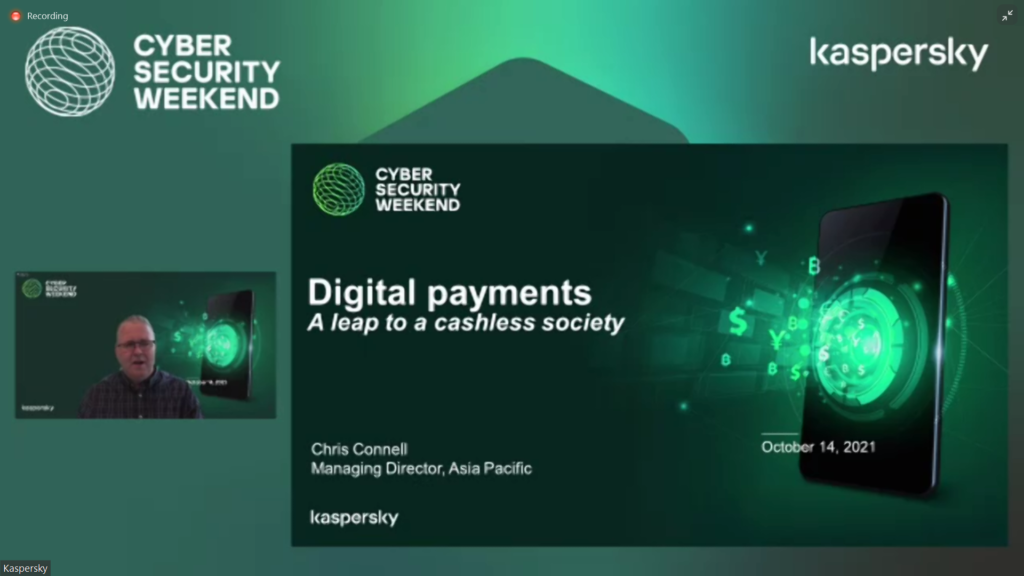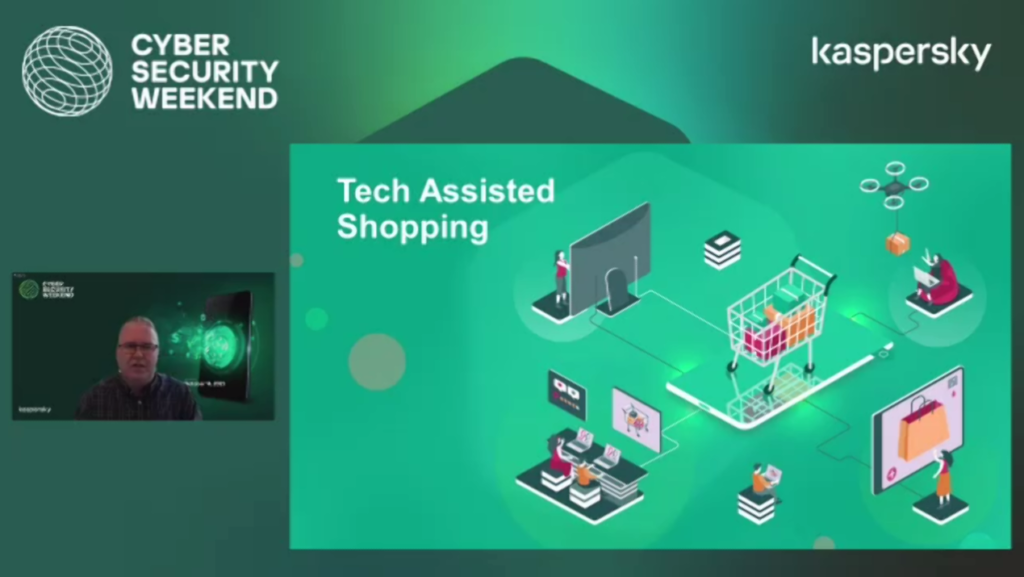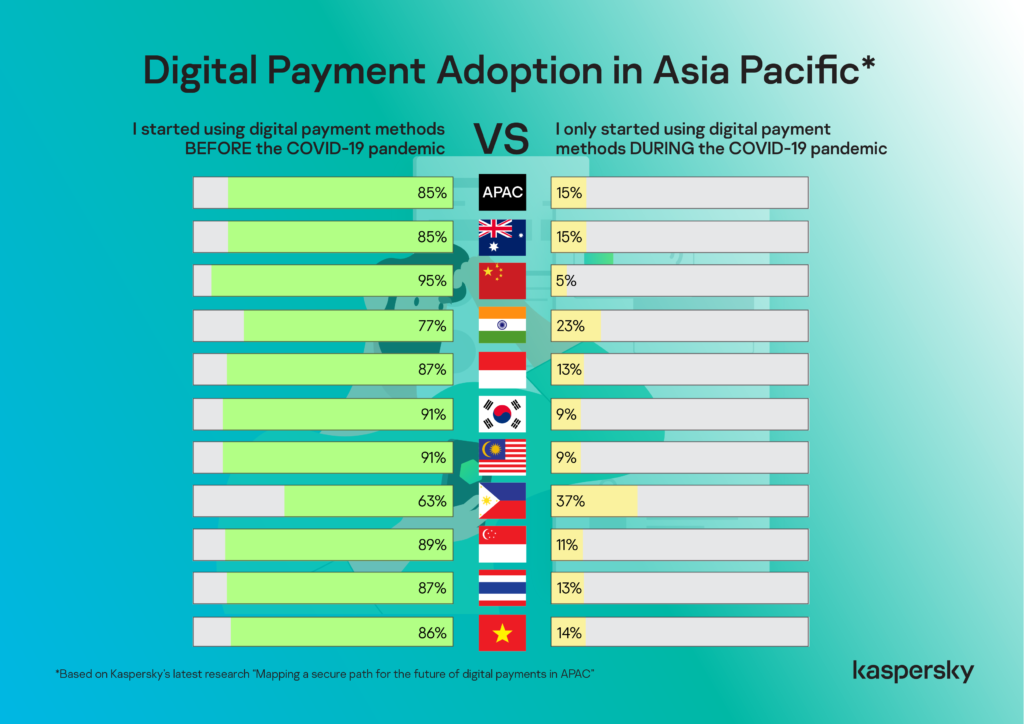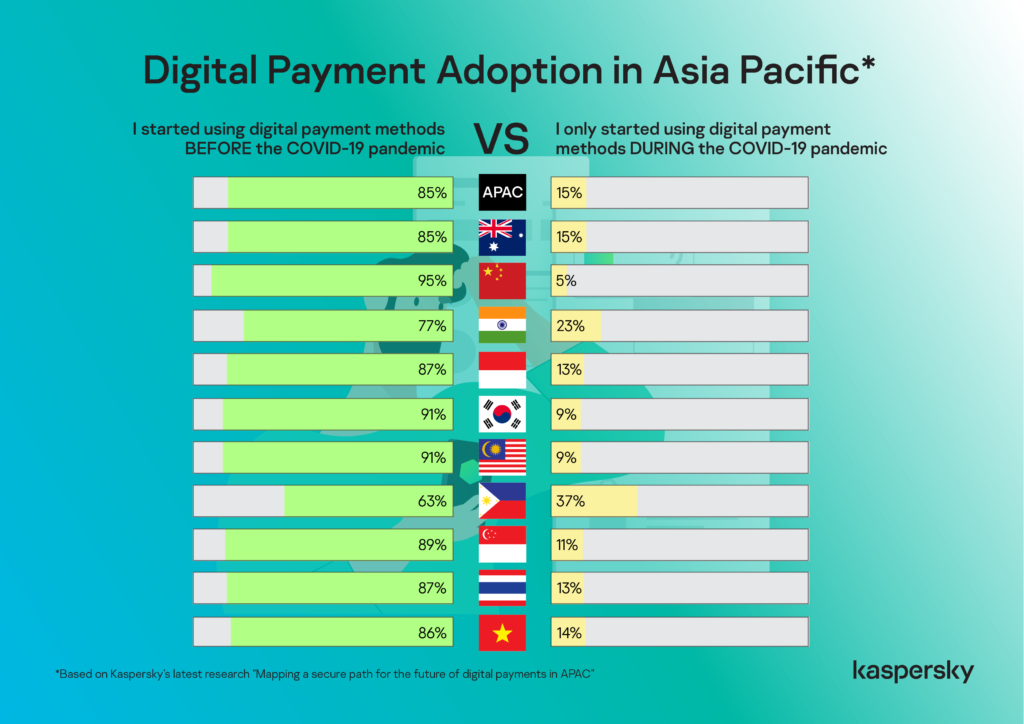Electronic payments are one of the cornerstones of the digital economy. and has helped promote economic and social well-being for billions of people around the world. especially during this time of the big outbreak. The Asia-Pacific (APAC) region is the world’s largest revenue generating region for digital payments. Analysts expect the regionThere will be an income figure in excess. $1 trillion by 2022 or 2023
Rapid and widespread adoption of digital payment formats As a result, those in this dynamic and creative business ecosystem accelerate their investments and expand into various markets. It aims to dominate the market with each click of the user.
Kaspersky, a global cybersecurity company It hosted an online press conference titled “Marking the money movement in APAC” to raise awareness of digital payment users in the region and the security implications of this trend.

Chris Connell, Managing Director, Asia-Pacific, Kaspersky “The growing demand for digital payments has transformed the way we process both online and offline transactions. to earn additional income through digital payments Consumers are highly dependent on this digital payment because it is easy and convenient. Clearly the need for a fast checkout experience. effective and low cost It will help encourage new innovations. And we see that innovation has come with the advent of real-time payments.”
Vitaly Kamlak, one of Kaspersky’s best researchers. described the nature The “modern financial attack” is a targeted financial attack. Who is the main target? And how large the robbery was, Vitali said of the famous bank robbery of Bangladesh’s central bank, the work of APT group BlueNoroff, believing it to be a subdivision. The financial side of the Lazarus group, which operates traditional cyber espionage. Vitaly also describes the evolution of the Blue Norovs since the massive bank robbery. and the focus on the current rising value of cryptocurrencies.

Mr. Vitaly Kamlak, Director of Kaspersky’s Analysis and Research Team Asia-Pacific region said “Even years after the Bangladesh Central Bank heist, both today SWIFT commercial bank and other financial industries also vigilantly tracked down the Blue Noroff Group and the theft of less-protected global banks. Being under the watchful eye for a long time has made the Bluenorovs less successful. And it takes a lot of extra effort to launder money and cover up traces. The Blue Noroff Group has started to turn its attention to cryptocurrencies that have skyrocketed in price.”
Additionally, data from the study titled “Mapping a secure path for the future of digital payments in APAC” examines the interactions and attitudes of users in each country to existing online payments in the Asia-Pacific region. This is the key to understanding the factors. To drive or stop the adoption of this technology.
One key research finding shows that a majority of Asian respondents (90%) have used a mobile payment app at least once in the past 12 months. This confirms that fintech is booming in the region. Nearly two in 10 respondents (15%) recently started using these platforms during the coronavirus pandemic.
The Philippines has the highest percentage of new electronic money or e-cash users at 37%, followed by India (23%), Australia (15%), Vietnam (14%), Indonesia (13%) and Thailand (13%). The lowest first online payments were China (5%), South Korea (9%) and Malaysia (9%).

China has been a prominent leader in mobile payments in Asia-Pacific since before the coronavirus pandemic. Leading domestic platforms such as Alipay and WeChat Pay are widely accepted and used. And it’s an interesting example for other countries in Asia.
Chris Connell, Managing Director, Asia-Pacific, Kaspersky, said: “Our latest research shows cash is still a priority, at least for now. 70% of APAC respondents still use physical banknotes for their daily transactions. However, the number of mobile payment applications and mobile banking is not very different.
With 58% and 52% of users using these platforms to conduct financial transactions at least once a week to more than once a day. Be a part of the digital economy This could overtake the full use of cash in the next 3-5 years.”
Security and convenience have prompted more users in the Asia-Pacific region to turn to financial technology. More than half of respondents said they had started using digital payment methods during the coronavirus pandemic. This is because it is safer and more convenient than face-to-face transactions.
The respondents also stated that the platforms This allows payments based on Social Distancing (45%), and is the only way respondents can conduct financial transactions during lockdown (36%). Additionally, 29% of users indicated that today’s digital gateways are more sensitive to social distancing. It is safer compared to the pre-Covid era, and 29% of users love the incentives and rewards the platform offers its users.
Even if it’s just a small number But friends and relatives (23%) still influence new users. The same goes for the governments of individual countries (18%) promoting the use of digital payment methods.

First-time mobile banking and payment app users admit their fears Fear of losing money online (48%) and fear of storing financial information online (41%). Nearly four in 10 respondents said they did not trust the security of these platforms.
More than a quarter (26%) of users find this technology too cumbersome. And it requires a lot of passwords or questions, while 25% of users admit that their personal devices are not secure enough.
“To drive a safe digital economy It is important that we know user issues and identify vulnerabilities that we need to fix urgently. It is gratifying that the public is aware of the risks that come with making online transactions. Therefore, developers and mobile payment application providers should be on the lookout for cybersecurity vulnerabilities. in each payment process Use security features It has a secure design approach that will be fully trusted by today’s and future digital payment users,” added Chris.
Kaspersky experts recommend the following steps to help users in APAC securely use digital payment technology:
- Better to be safe than sorry later – beware of fake communication. And be careful when sending sensitive information. Do not share private or confidential information online. especially when it comes to requesting financial information and payment details.
- Use your own computer and internet connection when paying online. Be careful with online payments. The same goes for buying and paying for products only from trusted stores. Public computers may have spyware running. This will save everything typed on the keyboard. Or the public internet connection could be intercepted by criminals awaiting an attack.
- Never share your password, PIN, or One Time Password (OTP) with anyone, even family or friends. which may seem convenient But it could also be an opportunity for cybercriminals to trick users into revealing personal information to collect banking information. Therefore, these data must be kept private and protected.
- Use holistic security products. And following security procedures can reduce the risk of becoming a victim of threats and help keep your financial information safe. Use trusted solutions to cover protection from a wide range of threats, such as Kaspersky Internet Security, Kaspersky Fraud Prevention, and Kaspersky Safe Money to help verify the authenticity of banking websites. payment system and online stores that are accessed to establish a secure connection
The post Kaspersky Keeps an Eye on Cryptocurrency Movements in Asia-Pacific appeared first on Thumbsup.



